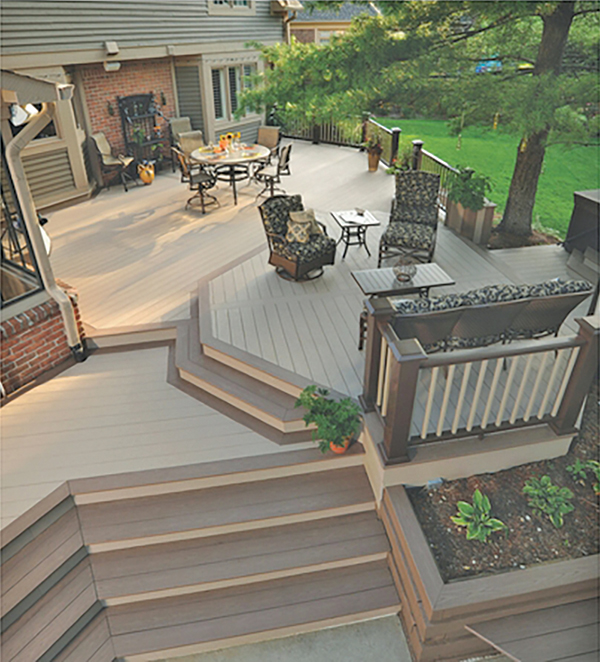 As the days get longer and temperatures rise, you may find yourself daydreaming at work about relaxing on your deck, reading a book or enjoying a cookout with family and friends.
As the days get longer and temperatures rise, you may find yourself daydreaming at work about relaxing on your deck, reading a book or enjoying a cookout with family and friends.
If you don’t have a deck, now is the time to build one to make your dreams a reality. At Hammond Lumber Company we are here to guide you through the journey of building your dream deck.
With so many options out there to choose from, it can be hard to know where to start. Let’s start by looking at the advantages of using different materials when building your deck.
Wood decking
People choose to build their decks with natural wood products because of the low material costs and the traditional beauty they offer.
There are a variety of woods to choose from, such as pressure treated lumber, cedar, and other hardwoods. It is important to choose the right material for your decking needs; just make sure whichever wood you choose is splinter-resistant.
Kebony wood products provide maximum benefits when building your deck. All their wood is organic and goes through a permanent strengthening process to ensure the longevity of your deck. The wood is non-toxic and so eco-friendly it can be recycled as untreated wood. It also has a high resistance to decay, fungi and insects.
Wood decks do require some maintenance, such as normal cleaning with a brush and water, as well as restaining and sanding over the years to keep the deck looking new.
Wood composite decking
More and more often, people are choosing composite decking because of the long list of benefits.
First of all, what is composite decking, and is it all the same? Composite decking is composed of wood particles similar to sawdust and plastics such as PVC, polyethylene, or polypropylene. Each brand has its own unique ratios of wood, plastic, pigments, and fungicides to ensure a high-quality product.
All wood and plastic materials used can be new or recycled, making composite decking an eco-friendly choice.
The composite material has a high resistance to water and moisture, which can cause rotting as well as shrinking and swelling, and compromise the integrity of your deck’s design. Forget about having to seal or stain your deck – there is no need with composite decking.
The wood grain design is deeply embossed, maintaining a natural look always. Just use a soft brush and mild detergent to keep it clean. Many composite producers such as Trex, Timbertech, and Duralife offer a variety of colorings to match whatever style you are looking for.
Capped vs. uncapped composite decking

Composite material has a high resistance to water and moisture, which can cause rotting as well as shrinking and swelling, and compromise the integrity of your deck’s design.
If you have decided to use composite decking boards, should you go with capped or uncapped?
A cap is an extra layer of protection that can prevent moisture from reaching the core of the board. Some caps can also provide extra UV protection, stain resistance, and mold and mildew protection.
It is important to know that not all composite boards are capped the same; boards can be capped on just two sides or on all four. A four-sided cap like that offered by Timbertech provides the most protection from moisture reaching the core of the board from all sides.
No matter what material you choose, Hammond can help you. We stock only quality products from top brands.
For more information on decking, visit our website, www.hammondlumber.com.
Send questions/comments to the editors.



Success. Please wait for the page to reload. If the page does not reload within 5 seconds, please refresh the page.
Enter your email and password to access comments.
Hi, to comment on stories you must . This profile is in addition to your subscription and website login.
Already have a commenting profile? .
Invalid username/password.
Please check your email to confirm and complete your registration.
Only subscribers are eligible to post comments. Please subscribe or login first for digital access. Here’s why.
Use the form below to reset your password. When you've submitted your account email, we will send an email with a reset code.